As we noted back in January, Featured Snippets went through some pretty major changes earlier this year. Featured Snippets are no longer that coveted “0” position and now occupy the number 1 position. Also, this update made it so you cannot have the same URL rank in a Featured Snippet and in the first page’s Organic results.
Of course, this hasn’t made Featured Snippets any less valuable, but it does require SEOs to make a dramatic shift in their strategies.
Which Pages Should You Focus on?
Since you can no longer have the same URL rank on the 1st page of Organic Search results and have a Featured Snippet, the biggest change SEOs have to make in order to win Featured Snippets for their pages is to prioritize certain pages over others.
For example, if you have a URL that is ranking on page 2 for a given keyword, prioritizing that page for a Featured Snippet is more beneficial than stealing your own success by optimizing an existing page 1 ranking URL.
Think about some of these additional factors when looking to prioritize URLs for Featured Snippets:
- What keywords do your competitors have a Featured Snippet for?
- Where do you currently rank for these same keywords?
- Do you need to create new content, or simply update existing content in order to win a Featured Snippet?
- What is the existing and potential value of each keyword in Organic results compared to the Featured Snippet?
If you haven’t noticed by now, these changes to Featured Snippets have made it imperative to dedicate an entire section of your content strategy to them. This will allow you to plan out what new pieces of content will be geared towards Featured Snippets and which existing content should be updated in order to jump from page 2 to page 1.
Which Types of Featured Snippets Should be Priority?
While there has been a major shake up with Featured Snippets, one thing remains the same; the types of Featured Snippets (tables, lists, and paragraphs).
But when looking to optimize existing content or create new content with Featured Snippets in mind, you need to think about which type of Featured Snippet best suits each page.

The table above shows the percentage breakdown of the three types of Featured Snippets. Paragraph Snippets are the most common, followed by List Snippets (either bulleted or numbered) and finally Table Snippets.
Certain search queries serve different types of Featured Snippets, and you will need to identify which of the three types are likely to appear for your targeted queries by reviewing the SERP and People Also Ask results for those queries.
For example, you’re more likely to see Paragraph Snippets for “who is”, “why is” and “what is” search queries. List snippets are likely to appear for DIY tasks and “how to” queries that require steps to be taken in a specific order. Table Snippets are common for search queries that provide data or pricing information.
Table Snippets
When it comes to Featured Snippets, tables are the least common of the three. It’s pretty straightforward to see when a page should be optimized for a table snippet. Any type of information that could be provided in this view and provide greater value to the user should be a table.
This is common in the financial industry for any type of loan or credit rates because it allows users to view these rates alongside time periods in an easy to read format.

List Snippets
List snippets are more common than table snippets and actually come in two types: bulleted list snippets and numbered list snippets.
Bulleted list snippets are popular for anything that includes a list that goes in no particular order, like our recent post on the 7 most important questions you should ask your SEO agency before signing that contract. We could achieve this by including an easy to read list of these questions at the top of the page with anchor links to each question in more detail.
Number lists snippets, on the other hand, are perfect for any piece of content that requires a user to take a series of steps in a specific order. This would be perfect for the how to diagnose cloaking blog Mike King published earlier this year.
Let’s test this. Right now, this cloaking blog post has a series of steps to identify cloaking in detail near the bottom of the post, but what if we were to add a TL;DR section at the top.
This is what the beginning of the blog post looks liked before.
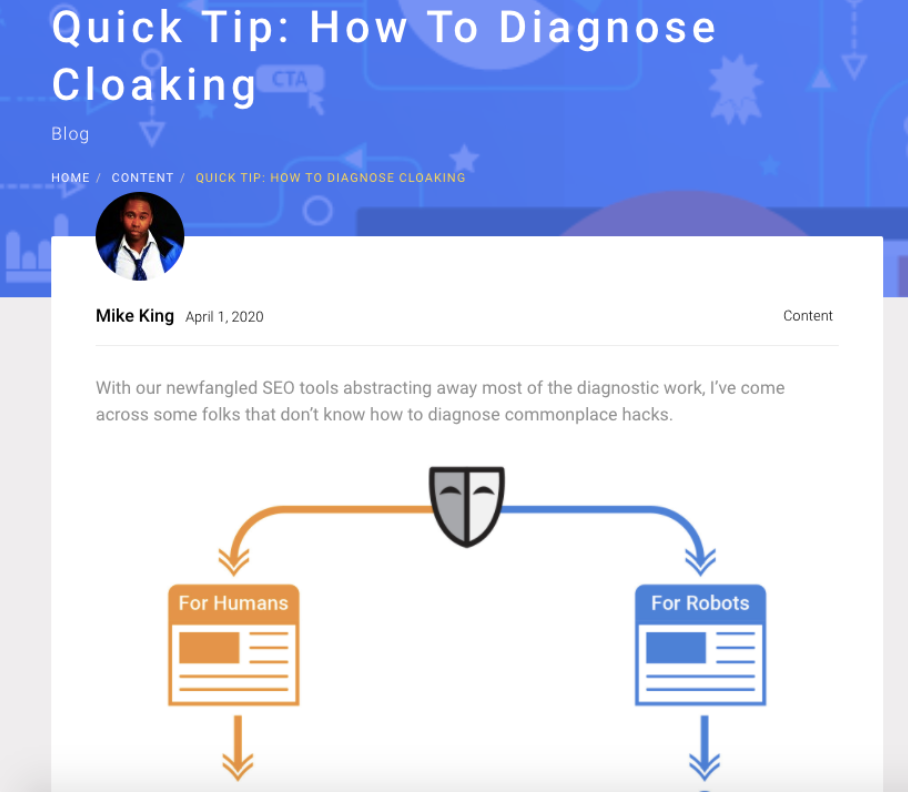
Below is what the blog post looks like now. It has been formatted to include a shorter version of the list at the beginning, making it easier for Google to pull this information for a List Featured Snippet.
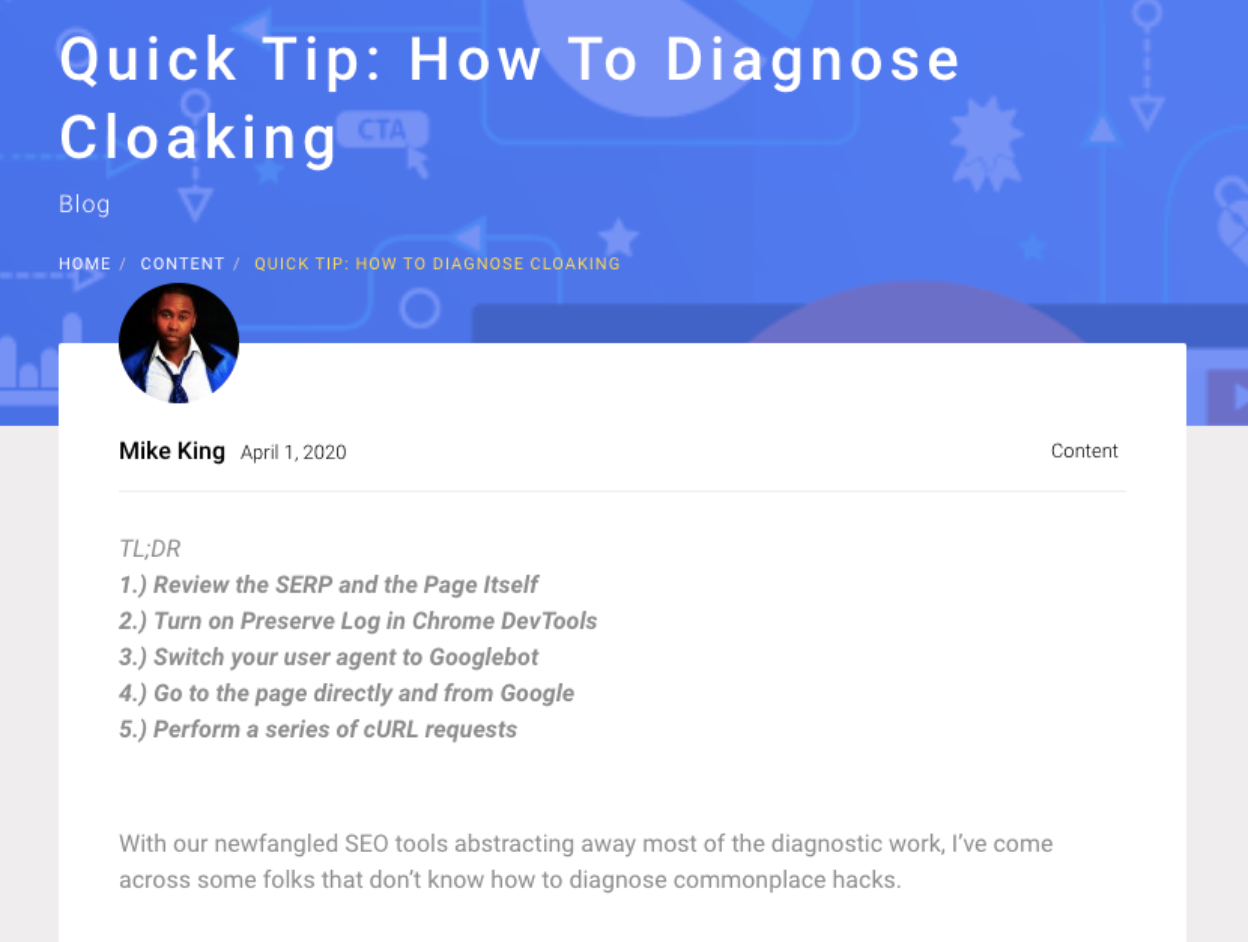
Next, you need to resubmit the URL in Google Search Console. If you’d like to see exactly how to do this, be sure to check out our Beginners Guide to Google Search Console. But in short, go to the URL inspection tool, choose the URL, click “Request Again”.
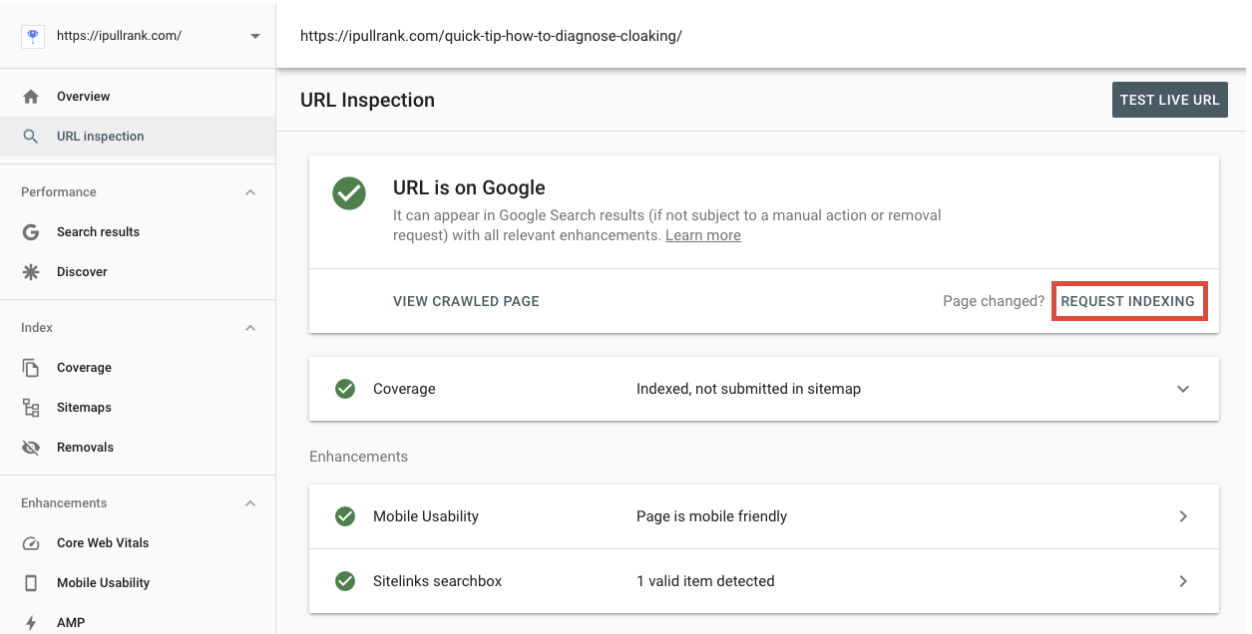
If you haven’t gained a Featured Snippet, continue to check the Search Result and make edits until it appears for your result.
Paragraph Snippets
Finally, the paragraph snippet is the most common of the Featured Snippets and comprise nearly 82% of all Featured Snippets. Since these snippets are the majority of all Featured Snippets, you need to understand how to write to get these snippets.
But writing with the intent of winning a Featured Snippet is not as cut and dry as you might believe since they are short pieces of text. For instance, according to a recent Ahrefs study, only 12.3% of all search queries serve a Featured Snippet. You have to understand not only how to write to win them, but also what keywords to focus on.
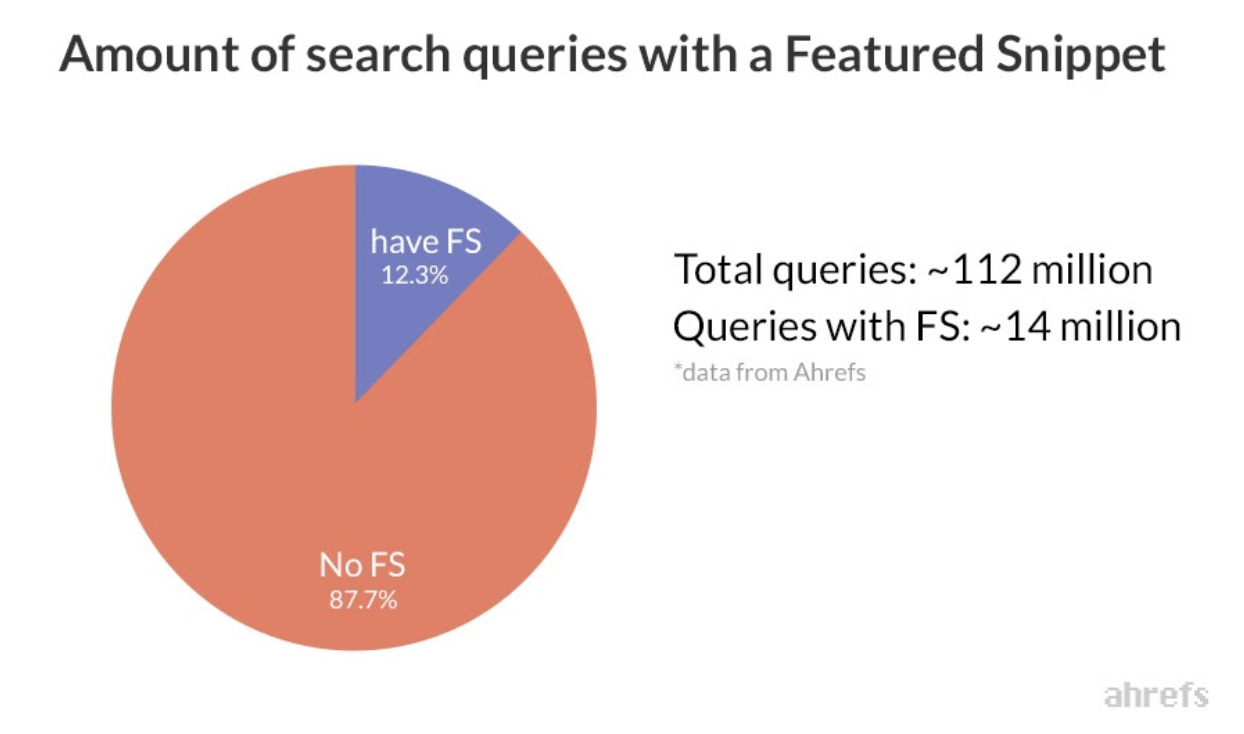
How to Write for Featured Snippets
When looking at prioritizing a piece of content for Featured Snippets, you need to consider what the content is about. For example, from the same Ahrefs study, some keywords serve Featured Snippets more often than others.

Focusing on keywords like “best”, “top”, or comparison keywords like “vs” are more likely to be in your arena.
But keyword usage alone won’t help you gain the coveted Featured Snippet for search terms like these. You need to go further and write with the intent to win these positions.
One way is to ensure you are using the right HTML for each type of Featured Snippet. For
- Paragraph Snippets: <p>
- Bulleted List Snippets: <ul>
- Numbered List Snippets: <ol>
- Table Snippets: <table>
If your page isn’t serving a table Featured Snippet, make sure your content is formatted in a table on the page. The same goes for List Snippets. Make sure you have formatted the lists on your page properly in HTML in order to gain the results you’re aiming for.
It is also best to keep the search query you want shown in the Featured Snippet close to the text that would appear in the snippet itself. This will better highlight the relevance and the relation between the query and the text to search engines.
Here are some other tips for writing to win Featured Snippets.
Write detailed, but concise, sentences
Keep your main points short and concise. This isn’t to say you shouldn’t be detailed, because you should be. But you should be quick to address what needs to be said since paragraph Featured Snippets are, on average, less than 300 characters.
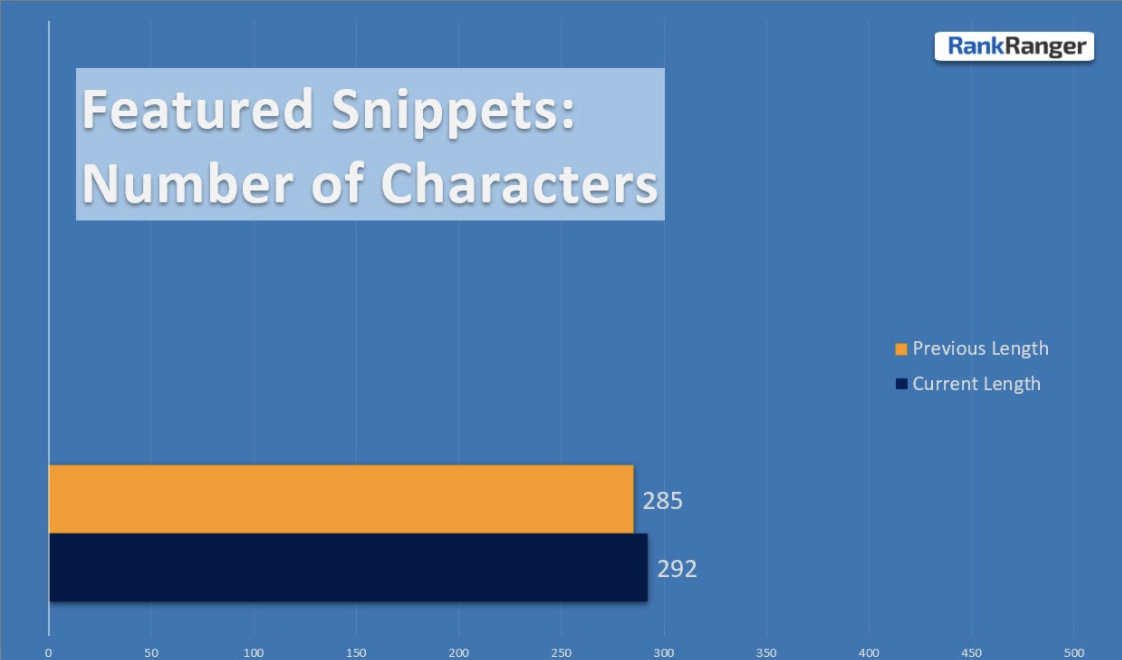
Address needs and answer questions
Regardless of the type of Featured Snippet, they all have one thing in common: they provide valuable information in an easily accessible manner.
If you have a piece of content that answers a question, or provides valuable information related to a search query, then you can format the text to improve your odds of gaining a Featured Snippet.
Format your content for Google to pull text easily
Finally, you need to format your content in a way that will be easy for Google to pull from your page. Just like you should keep your content concise yet detailed, you’ll need to make sure that you break up your content.
You can also break up your content with images, videos, and even giphys. This will also add an extra visual layer to your content so it isn’t just one giant wall of text.
Not only does this make it easier for Google to pull from your page, but it also makes for a better user experience. Long paragraphs and run on sentences make it difficult for users to focus, but breaking it up makes for an easier reading experience.
Featured Snippets can also include images, so adding these to your page doesn’t just help break up text, but can also make your Featured Snippet more visually appealing.
Other Factors
Earlier this year, we performed research into a variety of other factors that could potentially impact Featured Snippets using Machine Learning Classification Models. These models were based on rankings data from Moz which we then enriched with data from Ahrefs.
Some of the features that were involved in the model include: Referring Domains & Pages, Length, Readability, Internal & External Links, Image, and Page Speed.
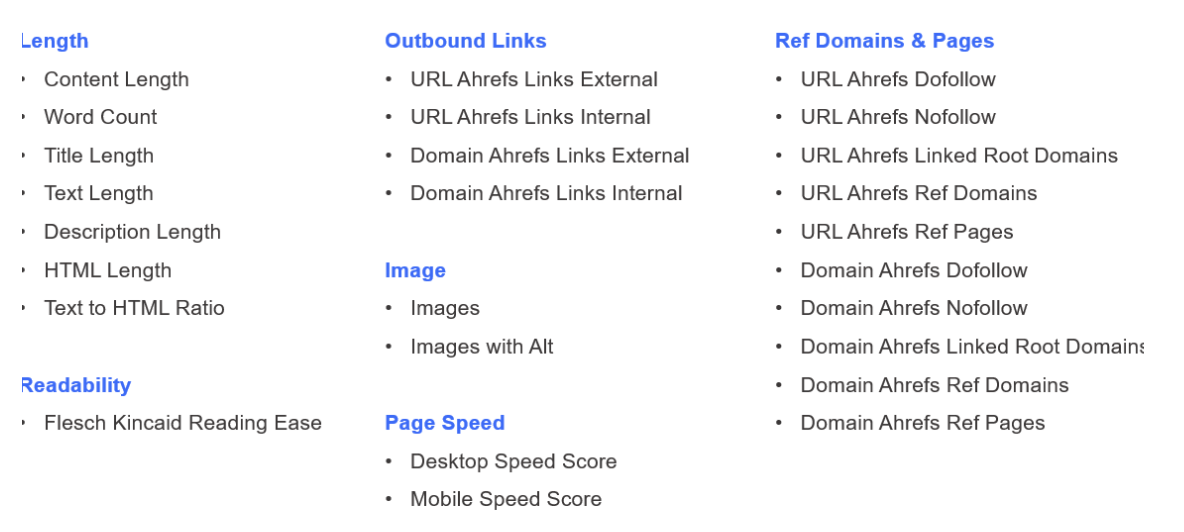
After running these models, we calculated the sum of coefficients of the features mentioned above that were shown to contribute to Featured Snippets for each category.
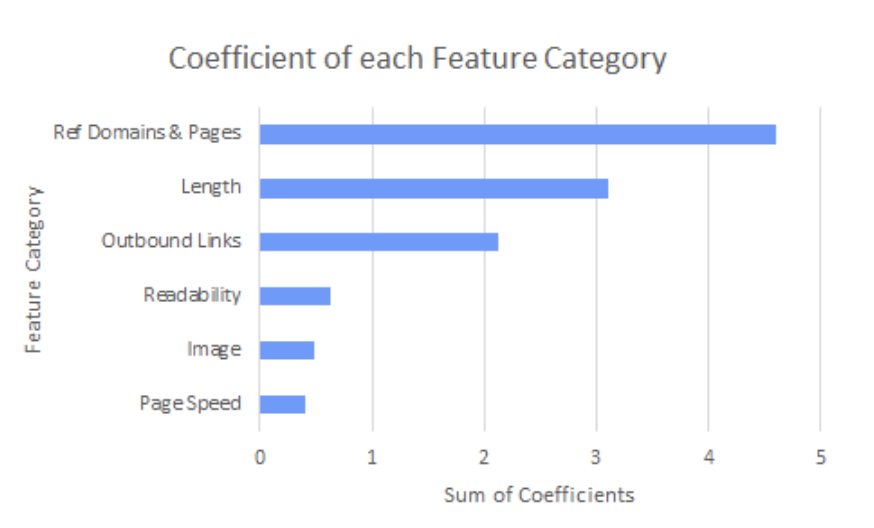
As shown in the chart above, Ref Domains & Pages appears to be the strongest category impacting Feature Snippets, followed by Length and Outbound Links. Below are more details about leading feature categories.
- Referring Domains and Pages
Search engines still look to choose a Featured Snippets page from a website with a large number of referring domains and pages while the page itself would be better to have few referring domains and pages.
- Outbound Links
A large number of outbound links (or outlinks) that point to other pages across the site and to external sites is helpful for a page to get Featured Snippets as well.
- Readability
Content on page should be very easy to read, and you can use the Flesch–Kincaid readability tests to ensure your writing is not overly complex.
- Image
Search engines prefer a Featured Snippets page not only has a fair amount of images, but a high percentage of images having Alt text.
- Page Speed
Based on the result, page speed is not an important factor for Featured Snippets. But in general, we still want to keep page speed as fast as possible.
How will this impact your strategy? Well, aside from a fast loading page filled with high-quality images and visuals, you also need to make sure that the content is readable. The reading level can vary site to site, but aiming for a 7th or 8th grade reading level can be your best bet.
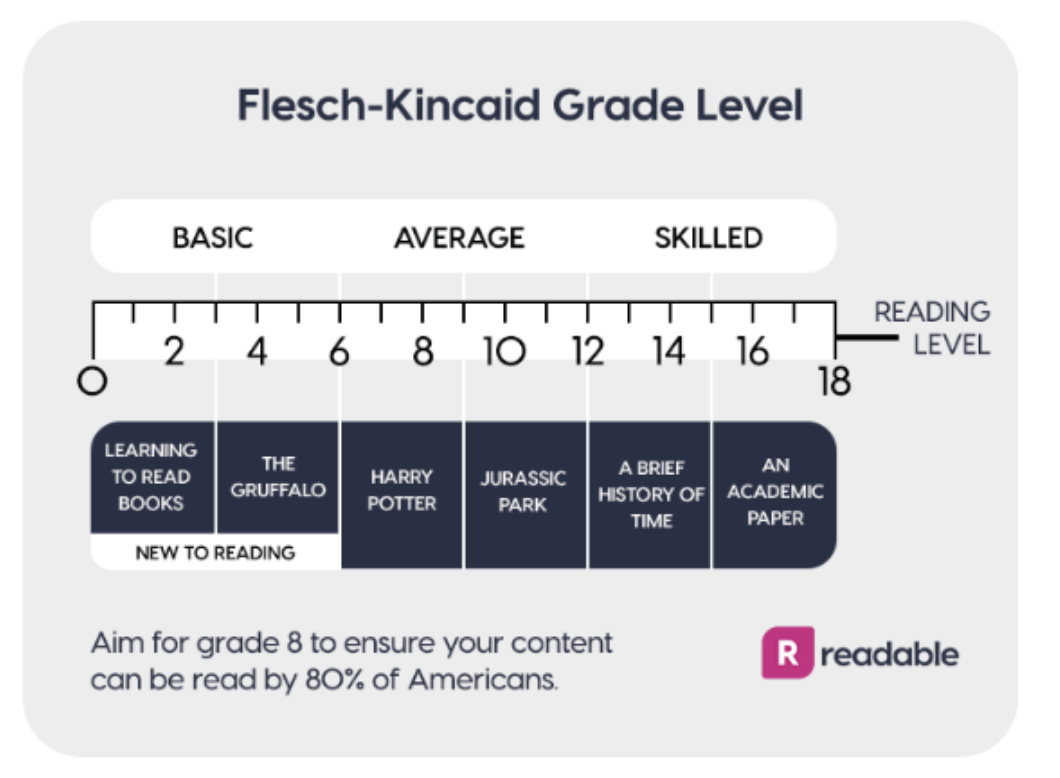
This shows that Google isn’t just looking at the way your content is formatted, but also other factors that might go unconsidered during the strategic planning process.
Key Takeaways
If you want to gain more Featured Snippets, there are plenty of factors you need to consider, but before you do so, make sure you prioritize pages so you don’t end up hurting your rankings. To demonstrate how we can increase our chances of gainsing a Featured Snippet for this blog post, here are some of the key takeaways you need to account for when trying to gain more Featured Snippets:
- Detailed, but concise points
- Answer questions and address user needs
- Properly formatted content (break it up)
- More page level links than domain level links
- Title tag length (nearly 60 characters)
- Pages that have a large number of external and internal links
- Appropriate readability level
- Descriptive image alt text
- Fast loading site
Conclusion
Gaining Featured Snippets takes a lot of strategy and you shouldn’t dive in without planning accordingly. But by identifying the proper pages, formatting your content properly, and accounting for noncontent factors, it can be done.
If you are looking to increase the number of Featured Snippets your site has, but need help we are here for you. Learn more about Content Strategy, SEO and all things digital marketing by subscribing to our newsletter and checking out our Learning Center. If you have any questions about Featured Snippets, leave a comment below or simply reach out to one of our Account Executives.
The post How to Write Content to Win Featured Snippets appeared first on iPullRank.
iPullRank https://ipullrank.com/how-to-write-content-to-win-featured-snippets/